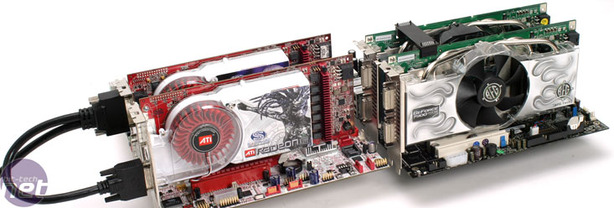Introduction
Earlier this year, a group of websites from around the world decided to join forces and work together on a single article covering the state of multi-GPU, and how competing graphics solutions perform in a massive number of games. We think that it is fair to say that there are very few publications out there capable of covering the scope of the series of articles that we - as a group - have undertaken.While we were out at this year's Game Developer Conference, the sites were approached by NVIDIA's Brian Burke with the idea to create a definitive guide to multi-GPU - the systems, platforms, cards, and game results from more than 60 games. When we returned to the UK, we spent a large amount of time discussing the scope of the article before we were happy for bit-tech to be a part of the project. The last thing that I wanted was for bit-tech to be involved in something controlled by one of the major players in the industry we were writing about.
Whenever we're approached by a company with an idea similar to this one, my natural skeptism kicks in. Afterall, most of the people that we deal with on a regular basis are experienced marketing specialists and many will try to butter journalists up. In this particular case, my initial worries were soon shot down once the outline of the article had been discussed by the group in conference call. Brian helped us to realise the concept, by getting the group together on conference call, organising a timeline and a couple of ideas on how to relay a massive amount of information effectively, but the execution of the project was down to us.

Happily, we gained the support of ATI - the other major player in the multi-GPU game. Both Andrew Dodd and Chris Hook were able to help out with required drivers and hardware for the European publications, and we have to extend our thanks to them too.
AMD, ATI and NVIDIA were not the only manufacturers to step forward and support this series of articles. The other manufacturers who have stepped forward to help include Abit and ECS - supplying motherboards for completing our testing - along with SuperTalent, who supplied publications with its T800UX2GC4 DD2-800 memory modules for testing on the high end platforms. Sapphire also helped some of the European publications with the required ATI hardware, too. Without the support from all of these manufacturers, this series of articles would not have been possible.
The Players:
If you haven't already read Josh's introduction to the series of articles, we suggest you have a read here. He outlines the plan of action for the articles coming over the next few weeks, and also covers the history of multi-GPU. Josh has been one of the main driving forces behind the team, pushing for targets to be met - his efforts over the last few months have really helped to make the guide what it is.Over the course of today's article, we will be covering the video card choices at the three different price points decided by the team and why we will also go into a bit of detail as to why we made those choices. Later this week Bjorn3D will evaluate the performance and features of the various multi-GPU ready motherboards that were chosen for the differing price points.
Following Bjorn3D's article, HardInfo, Neoseeker, NVNews, Rage3D and Legit Reviews will cover the meat of the guide, covering around 50 games and benchmarks. HardInfo will cover many of the 'common' applications used in reviews that you would normally read, while the other four publications cover a selection of games that are not particularly popular with reviewers, but are popular with the general public according to Xfire and 2005's list of best selling games in North America.
Finally, Guru3D will round up the findings, wrapping up the series of articles by highlighting the benefits and shortcomings for all of the six configurations.
Before we get on to the choices that were made by the group of publications for the $1000 US (~£650 GBP), $2000 US (~£1300 GBP) and unlimited budget price brackets, we really need to cover some of the background as to how ATI and NVIDIA go about getting a pair of GPUs to work together in tandem.

MSI MPG Velox 100R Chassis Review
October 14 2021 | 15:04






Want to comment? Please log in.